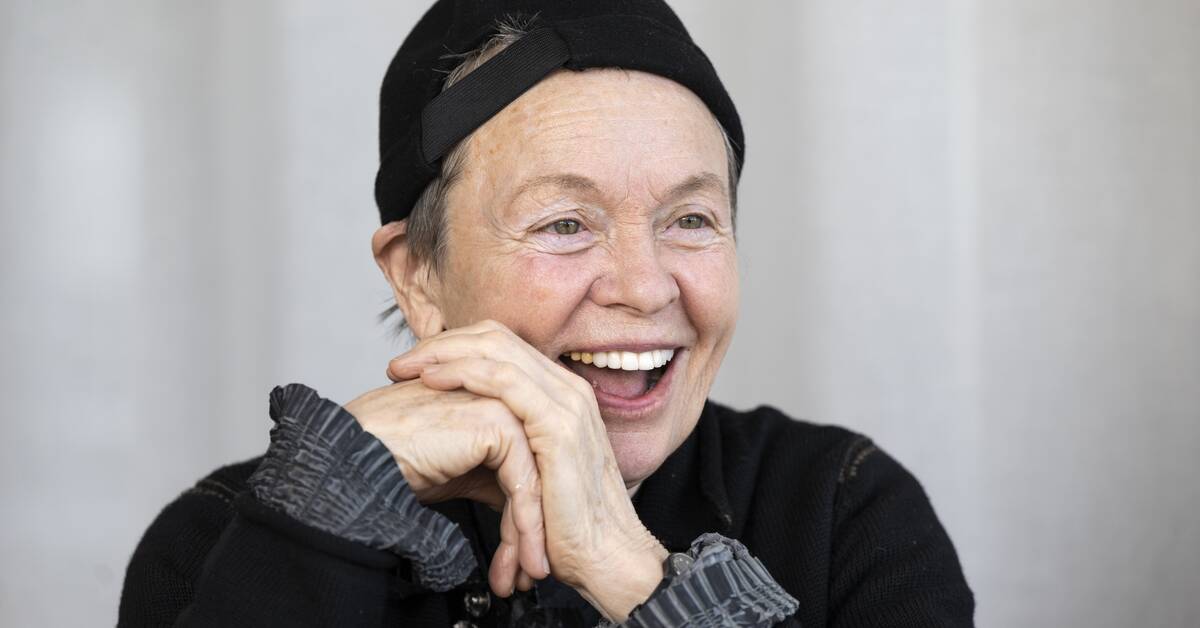If you look into a mirror, you might think it's yourself you're seeing. But it is not.
This exhibition begins by stating just that: that the only thing we can see is a small odd shard of ourselves. And we need tools, like a mirror or a story, to start thinking about who we are. If we angle the mirror on the slant a little, the image becomes even more of a surprise.
Laurie Anderson's exhibition is structured like a black vortex. Four galleries lead around and into a central room, a main stage. And the exhibition mixes video works with photos, texts and virtual reality in a dreamy stream.
She often picks parts from classical cultural-historical works, by Ingmar Bergman, Dostoevsky or Bob Dylan, into her own artistic construction. And she scissors pieces out of reality almost like a journalist. Sometimes literally when newspapers become material for sculptures.
But instead of telling how something is, or should be, she depicts how an event like the terrorist attacks of September 11 lands in her, or in a person she wants to highlight. She consistently uses the self, the subject, as an artistic material and allows a text to happen in the body. Laurie Anderson makes poetry that is ongoing, both as sound, movement, image and language. And she combines things that don't seem to belong together. She builds new musical instruments, where she mixes digital technology with analog objects and she creates animals that speak, animatronics.
It is powerful that Moderna Museet is showing an artist who is so clearly rooted in the performing arts. Although Laurie Anderson herself won't be there every day, she has directed the room to act with the audience. The exhibition reminds me of the freedom that is within me. And it reminds us of what all performing arts point out, namely that I both am, and am not, who I seem to be.
For art is a spiral slide inward, which has no end. Laurie Anderson shows that if you dare to go, there is an infinite amount to discover.

